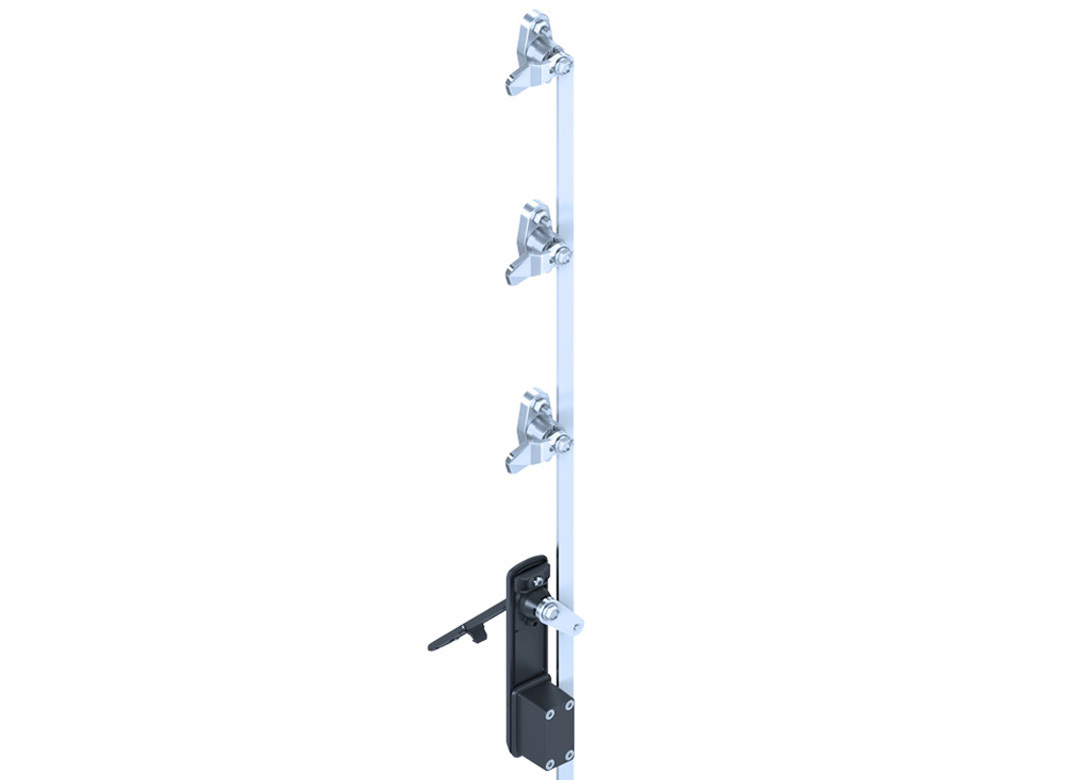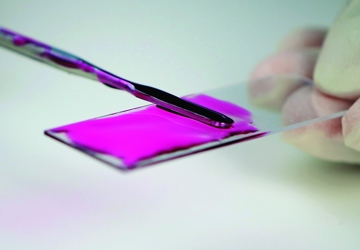

EMKA, a leading manufacturer of locks, hinges, and seals, now offers a system within seals that gives high operational convenience, uniform sealing, and high protection from burglary. The multiple interlocking system with cams provides assured security to its users.
Locking doors and flaps of large control cabinets and other types of enclosures securely and at several points at the same time – this is what multiple interlocking systems with cams from EMKA have been designed to do. Even in difficult-to-reach areas, doors and flaps can be opened and closed quickly and easily. The system, EMKA states, is available in many variants and can be optimally adapted to the respective requirements.
Switchgear and control cabinets and other enclosures are available in many designs – from small and compact to single and row cabinets to particularly large enclosures. These devices are required to meet stringent requirements and must provide maximum protection for the electronics and other components contained within. On the one hand, dust, dirt and/or water must not permeate, and unauthorised persons must be prevented from gaining access.
Therefore, the right choice of locking solution is important if the door or flap must maximise its function. Large doors with a height of 2,000mm, for example, often have the problem that they do not seal properly, especially at the corners, and do not offer adequate protection against break-in.
“Multiple interlocking systems with cams with an inside seal is the preferred design since it enables a better distribution of closing forces due to the numerous locking points. This distinguishes the locking system from those without cams, as the latter only have a maximum of two locking points with round bars or three locking points if a control element with a cam is used. If installing particularly large doors, these locking points are usually far apart and thus often do not offer the best solution,” explains EMKA. “However, if a multiple interlocking system with cams is installed, the doors close much more securely and tightly, as three or up to seven locking points can be implemented. For particularly large doors the number of locking points can even be increased.”
EMKA also offers this locking system with compression function and the solution can be extended by a corner drive. All variations of the locking system meets the requirements of protection class IP65 according to DIN EN 60529 and is thus dust tight as well as protected against water jets.
One handle for all locking points
There are many advantages to using multiple interlocking systems, particularly in areas that are difficult to access. The problem is if large enclosures are installed, for example, as a suspended distribution variant with conventional individual locks, the locking processes of these enclosures are associated with an increased amount of time.
Also, usually difficult to access are underfloor containers, which are installed underneath a railway carriage or locomotive. Until now, the operator has had to operate all the locks on the flap one after the other in order to open the container lid and close it again securely. The multiple interlocking system with cams makes this easier. Only one operating element needs to be actuated to open the door of an enclosure or the lid of an underfloor container.
The rod drive on the inside of the door converts the rotational movement that starts when the handle is operated into a translational movement of the rod. This activation also moves the three, five, seven or more cams installed, depending on the application. This results in the cabinet or box being locked or opened simultaneously at these locking points. Errors or delays in the uniform movement cannot occur because a continuous rod leads from one locking point to the next.
For maximum flexibility, the main drive can be positioned anywhere along its mounting spacing dimension parallel to the door’s edge. For example, it is possible to mount the swinghandle or another operating element at the very top or very bottom outside the door. It is therefore not required to place the handle in the centre of the door and to mount the same number of locking points above and below the drive element.
The arrangement can be selected according to requirements as the system is compatible with all locking components including accessories from EMKA. Whether swinghandle, T-handle, or knob handle – the company provides a wide selection of operating elements and matching products.
Compression unit as an option
The multiple interlocking system with cams is also available with a compression unit. Locking points with compression function pull the door securely and smoothly into the surrounding door sealing via the cams, compressing the seal to 4.5mm. This requires a closing travel of 180 degrees at the actuation unit.
During the first 90 degrees, the cams are brought into the closing position without making any contact. Rotating the latch an additional 90 degrees, the axial stroke movement of the cams compresses the seals. Another compression version made by EMKA requires a closing travel of only 90 degrees.
With the rotary compression function, the system is thus particularly suitable for applications where larger doors and flaps are to be closed with high sealing pressure. By incorporating EMKA‘s optional corner drive, vertical closing points are extended by horizontal ones. The corner drive is available in a hybrid design made of plastic/zinc die-cast. It can be used inside and outside the seal. The flat rod used for the drive can be designed without crankings and unwindings. When using the corner drive, both the 90 degree or the 180 degree compression versions can be combined.

Becca is the latest member to join our team and is eager to get stuck into the world of fasteners. She brings an enthusiastic and fresh outlook on what we do editorially and will be leading our social media activity – including sourcing material, editing articles and posting online.





